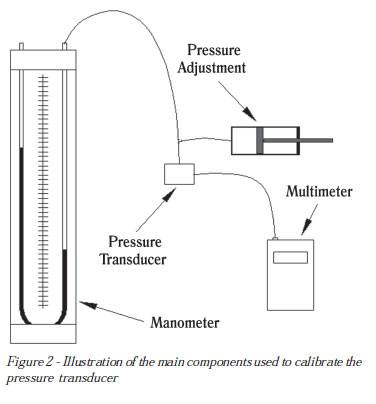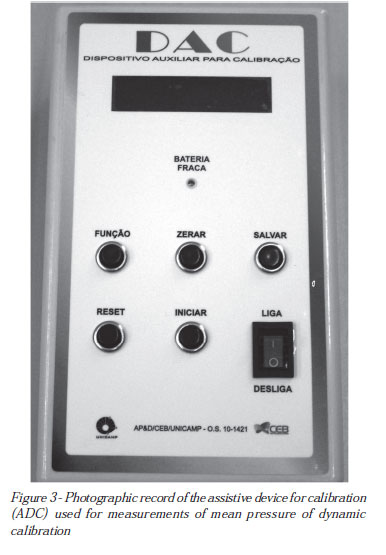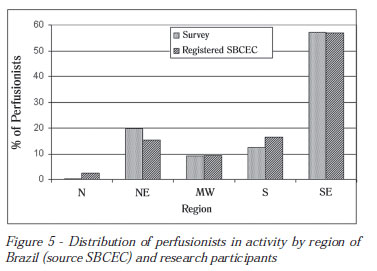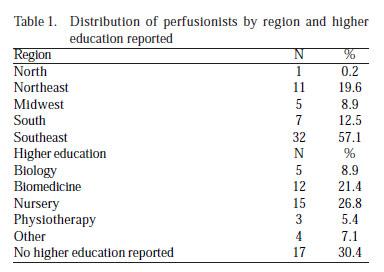INTRODUCTION: Roller pumps play an important role in extracorporeal circulation. However, occlusion of the rollers should be adequately performed and this can be adjusted mainly by two methods: static and dynamic. OBJECTIVE: To investigate how the Brazilian perfusionists adjust arterial roller pumps in their services and evaluate the application of a Device to Assist Calibration (DAC) that facilitates roller adjustment by the dynamic calibration method. METHODS: We installed a roller pump with accessories to perform adjustment by drop rate (static calibration) and dynamic calibration methods during the XXVIII Brazilian Congress of Extracorporeal Circulation. Perfusionists were asked to adjust the roller pump according to the procedure they usually do in their service. After each adjustment pressure was measured by dynamic calibration method with DAC. The research was approved by the Research Ethics Committee of UNICAMP, Nº 1144/2010. RESULTS: There were 56 perfusionists in this study. Pressure average of 56 measurements of dynamic calibration was 434 ± 214 mmHg; 76% of measurements were within the recommended range for the use of the dynamic calibration method (between 150 and 500 mmHg). CONCLUSION: Brazilian perfusionists tend to adjust roller pumps with less occlusive settings. The amplitudes of the dynamic calibration pressure tend to be smaller for more experienced perfusionists because their skills increase with time. The device can be used by the perfusionist to adjust roller pumps with greater accuracy and mainly repeatability in few minutes.
Extracorporeal Circulation; Pumps; Calibration









